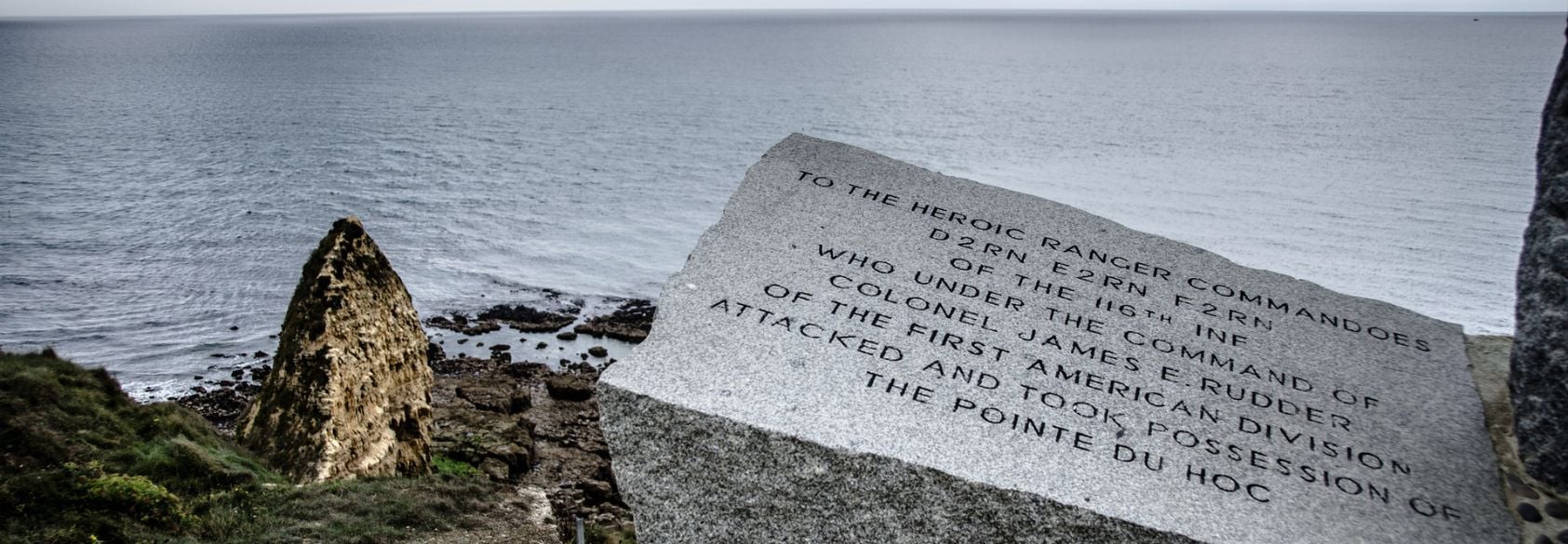Teaching D-Day: Diverse Voices, Historical Memory and Civic Reflection
Uncover untold voices, civic lessons, and historical memory in this engaging classroom-ready resource.

What stories do these cliffs still hold from D-Day—and whose voices are we just beginning to hear?
Share
June 4, 2025
Uncover untold voices, civic lessons, and historical memory in this engaging classroom-ready resource.
Share
Each year on June 6, educators and communities commemorate D-Day—the Allied invasion of Normandy in 1944 that changed the course of World War II. While it's widely remembered for its scale and strategy, D-Day also provides a great opportunity to explore untold stories, recognize veterans and reflect on the ongoing impact of civic duty.
How does historical memory shape our choices regarding the people we will honor—and those we will omit? What changes when we include voices that history has too often left out? Use this lesson to guide students through key moments, critical questions and meaningful reflection. Explore the highlights below, then begin the video, discussion prompts, and classroom activities.
This lesson includes discussion questions and extension options designed for both middle and high school learners, with opportunities to scaffold as needed.
D-Day commemorations each June reflect on one of the most significant turning points of World War II. Ceremonies, documentaries and classroom lessons often honor Allied bravery, but increasingly also examine how we tell the story—and who gets included in it.
Learning about D-Day through diverse perspectives helps students see that service and sacrifice came from all parts of society. It also encourages students to think critically about civic responsibility, public memory and the importance of inclusive storytelling in history education.
Educators can use this moment to introduce students to multiple historical voices—especially those previously underrepresented. Students may also reflect on how remembering the past shapes civic values and personal identity today.
This featured video (approximately eight minutes) provides a vivid overview of Operation Overlord, from its planning and logistics to the emotional weight of Franklin Delano Roosevelt’s national prayer. It highlights the scope of Allied coordination, the dangers soldiers faced, and the lasting impact of the mission.
Note: The video centers traditional narratives—providing an opportunity to prompt critical thinking around whose voices are heard and whose are missing.
D-Day involved bravery from people across backgrounds, but many of their stories are left out of mainstream accounts. Here are a few groups to consider including in your lesson:
The 320th Barrage Balloon Battalion was the only African American unit to storm the beaches on D-Day. Their mission was to raise hydrogen-filled barrage balloons to protect Allied troops and ships from enemy aircraft. Despite facing intense fire and segregation, they played a critical role in the invasion’s success and were commended by General Dwight Eisenhower.
While Navajo Code Talkers are best known for their service in the Pacific Theater, Native American code talkers from Comanche, Cherokee and other nations served in Europe, including on D-Day. Comanche Code Talkers landed at Utah Beach and used their language to transmit vital messages, helping coordinate the invasion and avoid German interception.
French civilians and resistance fighters played a crucial role in the success of D-Day by sabotaging German supply lines, relaying intelligence to the Allies, and guiding troops through local terrain. Many also risked or lost their lives sheltering Allied soldiers and resisting Nazi occupation.
Women served as nurses near the front lines, codebreakers deciphering enemy communications, and journalists reporting from Normandy. For example, American journalist Lt. Martha Gellhorn landed after D-Day to care for the wounded, and codebreakers at Bletchley Park helped ensure the invasion’s secrecy.
Note: Teachers can explore one group as a class or assign students to research and present a story for homework (see below). This also pairs well with the Media Literacy Extension, where students examine whose voices are included in the main video—and whose are missing.
Help students explore how D-Day is portrayed in the media and why some voices are highlighted while others are missing.
Quick Analysis Prompts:
Choose one group not featured or barely mentioned in the D-Day video (e.g., African American soldiers, French civilians, women in support roles). In one slide, paragraph, or short video/audio clip:
Students share the next day in small groups or in a gallery walk format.
Find new ways to discover the meaning of Memorial Day with your students using these free K-12 Memorial Day lesson plans & resources from Share My Lesson.
Explore free Veterans Day lesson plans, activities, and resources to help students understand service, sacrifice, and civic duty.
